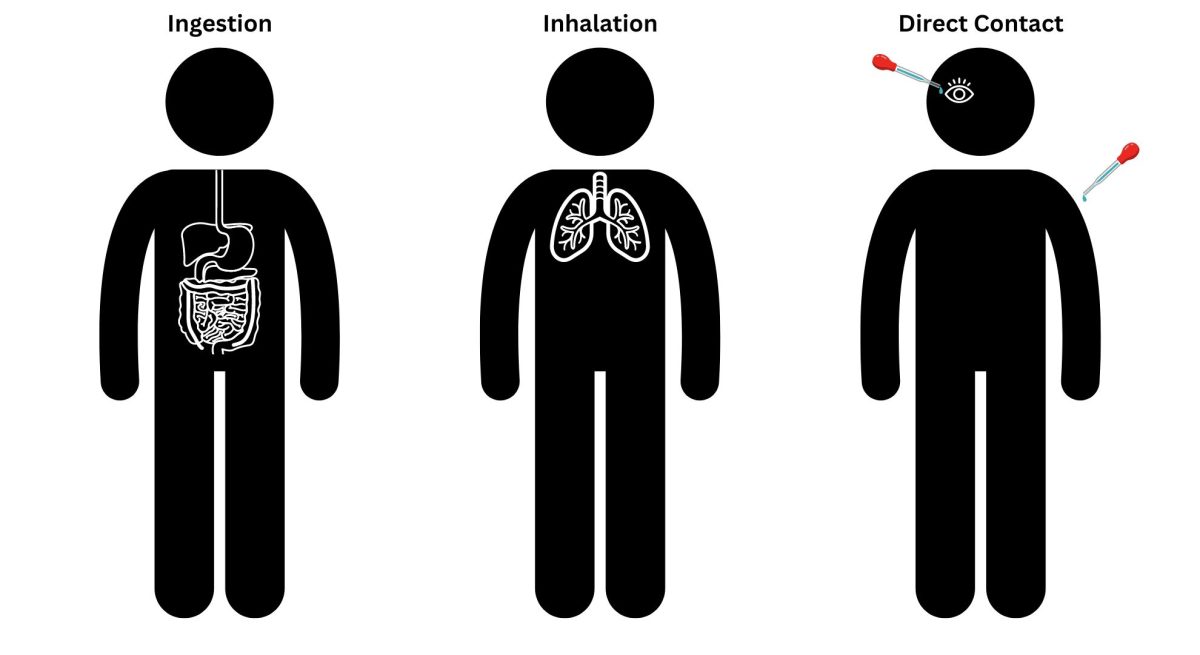Routes of Entry
PPE is designed to provide emergency medical personnel with protection from hazardous materials that can affect the body by one of three primary routes of entry: inhalation, ingestion, and direct contact.
Inhalation occurs when emergency personnel breathe in chemical fumes or vapors. Respirators are designed to protect the wearer from contamination by inhalation but they must be worn properly and fit-tested frequently to ensure continued protection.
Ingestion usually is the result of a health care provider transferring hazardous materials from his hand or clothing to his mouth. This can occur unwittingly when an individual wipes his mouth with his hand or sleeve, eats, drinks, or smokes tobacco.
Direct contact refers to chemical contact with the skin or eye. Skin is protected by garments, and full-face respirators protect against ingestion and direct eye contact. Mucous membranes in the mouth, nose, throat, inner ear, and respiratory system may be affected by more than one of these routes of entry. Many hazardous materials adhere to and assimilate with the moist environment provided by these membranes, become trapped or lodged in the mucus, and are subsequently absorbed or ingested.

